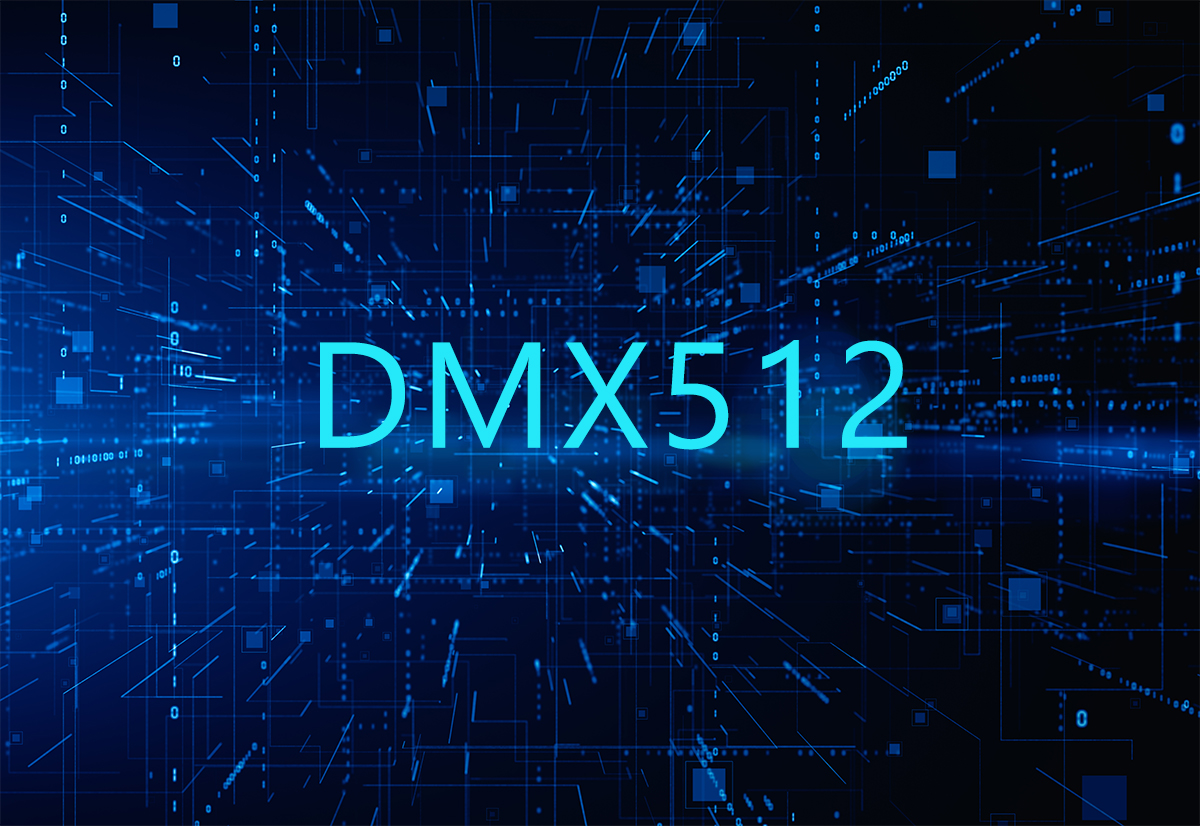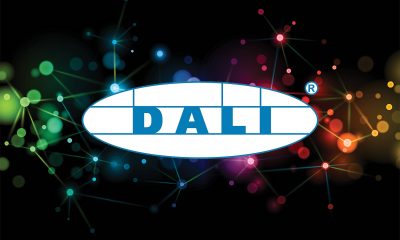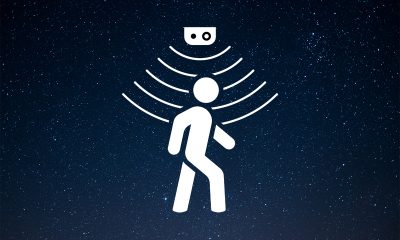General description
A DMX512 lighting control system refers to a collaborative collection of products that work together to deliver a DMX-based lighting solution. These products include, but not limited to, DMX controllers, RDM controllers, Ethernet-based controllers, lighting consoles, network gateways, protocol converters, LED drivers, DMX repeaters, control panels, triggering devices, and commissioning tools. By “DMX512”, all we mean here relates to the use of this digital communication protocol in controlling architectural and landscape lighting systems, rather than entertainment and stage lighting equipment for which this protocol was originally designed. With LED lighting taking the center stage, lighting controls are playing an ever more important role in unlocking the technology’s capacity to deliver value. DMX512 has a great deal to live up to, whether it is to enhance architecture, transform an environment, and create a feast for the eyes. With DMX-controlled LED lighting, there are limitless possibilities to inspire the conversation between visual art and lighting technology.
What is DMX512
The DMX512 protocol is a system of digital message formats and rules based on the EIA/TIA-485 standard which is commonly known as Recommended Standard 485 or RS-485. DMX is an acronym for Digital MultipleX, which describes a standard method of carrying a stream of data for multiple devices down a single cable. The ‘512’ means that control commands originated by a DMX controller, the device transmitting the DMX512 data and otherwise known as a master device, can be sent on 512 separate channels. Each control channel has a DMX address assigned to it. Each DMX receiver, also called a slave device, is addressed to a unique DMX channel. It will only listen to the addressed channel and respond to commands sent to that address from the controller.
The most basic structure of a DMX network is characterized by a daisy chain connection, which starts at the master device, goes through all slave devices and ends at a terminator. A maximum of 32 loads can be on a DMX bus (daisy chain) without using splitters (repeaters). A load normally represents one slave device, however multiple devices which are set to the same address also constitute a load if these devices are intended to be controlled together. In cases there are more than 32 loads that need to be connected to a single master device, splitters will be used to create the required number of daisy chain connections. A single DMX network, in which up to 512 individual channels/loads can be controlled by a single master device, is known as a universe. A DMX universe can be comprised of a single DMX bus that connects a maximum of 32 loads or consist of multiple buses on which a maximum of 512 loads are connected.
Signaling mechanism
The RS-485 architecture, which defines the protocol’s electrical specifications, uses a differential signaling mechanism (positive and negative voltages) at its two-wire physical layer. The same electrical signal is transmitted as a differential pair of signals, each on its own line. In a DMX network, however, at least 3 lines—data plus, data minus and a common ground—are used in a cable. An additional pair of data lines may be reserved to allow the use of an optional second link. A DMX compliant data cable must have its positive and negative wires twisted to ensure their equal exposure to electromagnetic interference (EMI), thus both signals arrive at their destination without any extra signals contained. The ground wire serves as a shield against the EMI. A maximum capacitance of 30 pF/ft is allowed between data lines. The capacitance between the data line and shield should not exceed 55 pF/ft. A uniform characteristic impedance of 120 ohms is specified by the standard to support electromagnetic wave transmission. The very end of the DMX cable must be terminated with the same impedance of the cable to stop electrical reflections which would otherwise occur in an unterminated cable. The termination is made with a resistor that is connected between the data pins. The DMX operation, therefore, requires 3-core or 5-core shielded cables with a 120 +5%/-10% ohm impedance placed between data+ and data- lines. Cat5, Cat5e, or Cat6 cables are fine to use with DMX512. While EIA-485 allows a cable run length of up to 1,200 meters (4,000 feet), the DMX512 bus topology allows a maximum cable run length of 450 meters (1,500 feet) and the practical implementation is usually under 300 meters (1,000 feet).
DMX universe
A master device (transmitter) has one ‘OUT’ connection to the DMX universe. In a DMX universe, each slave device (receiver) has both an ‘IN’ and ‘OUT’ (or ‘THRU’) connection. The ‘OUT’ connection is made with a female connector. The ‘IN’ connection is made with a male connector. The DMX standard only specifies the use of 5-pin XLR connectors. This is intended to distinguish DMX cables from standard XLR cables and allow the use of 5-core cables for further expansion of systems. Nevertheless, in typical DMX implementations only the first three pins are used and the more affordable 3-pin XLR connectors are in common use. Data transmission in a DMX universe is polarity dependent. No short circuit is allowed between any of the pins, or between any pin and ground.
Channel-based control
DMX512 is a serial, channel-based protocol. Data is transmitted in asynchronous format as a series of bits (binary digits). A DMX packet or frame consists of a BREAK, a MAB (Mark After Break), a START code, and data bytes. The BREAK signal that is transmitted as logic zero indicates the start of a new data packet. A logical one referred to as the MAB separates the BREAK from the START code. The START code determines the type or function of data that will be sent. It is usually ‘0x00’ for normal operation and can be modified to perform other enhanced functionality. A grouping of eight individual bits, called a byte or data slot, makes up the information package that the master wishes the slave to perform. The stream of DMX data that follows the START code consists of up to 512 bytes, wherein a byte of data is designated as a channel. All 512 channels are sent in a sequential order. Neighboring data frames are separated a Mark Time Between Packets (MTBP) signal. A full data packet with 512 channels has a length of 5,667 bits. The DMX bus operates at a baud rate of 250,000 bits per second (250 kbps). Consequently, a maximum of 44.1 DMX packets can be transmitted per second. In other words, DMX supports a 44.1 Hz refresh rate. The 8-bit resolution makes 256 possible values ranging from 0 to 255 decimal, which means 256 levels of control for each channel. For a much finer level of control, two consecutive DMX channels can be used to send 16-bit control commands.
Remote Data Management (RDM)
The DMX signal stream is unidirectional from a transmitter (DMX controller) to the receivers (slave devices) in a DMX universe. There’s no bidirectional (two-way) communication between the master and slave. The slave just listens to the master and performs as instructed. The protocol does not provide any handshake mechanism, nor does it transport any information for error checking or correction. Two-way communications are often desired since fixture monitoring, configuration, addressing, and commissioning necessarily involves data exchange.
Remote Data Management (RDM) is an enhancement to the unidirectional DMX protocol. It’s a half-duplex bidirectional protocol that permits a DMX controller or other control devices to discover and then configure, monitor and manage all slave devices through a DMX512 network. To enable bidirectional communication, RDM packets are inserted between the existing DMX512 data packets through the use of the alternate start code ‘0xCC’. Both DMX transmitters and receivers must be RDM-enabled. All RDM slave devices have a unique identifier (UID). These devices cannot initiate communication on its own and may only respond when spoken to. The maximum number of RDM slave devices on a single daisy chain is 32.
DMX over Ethernet
LED-based architectural lighting systems are frequently designed as color mixing systems such as RGB, RGBW, RGBA, and RGBWA floodlights, spotlights, wall washers and grazers, well lights, and pixel nodes. A single light engine incorporates multiple strings of LEDs. These LED strings are individually dimmed so that a variable mixture of wavelengths can be created. The operation of tunable white lights involves independently control of both color temperature and intensity of light. A single LED luminaire can consume more than three addresses each, and it’s not uncommon for an architectural LED system to use tens of control channels. The number of DMX addresses required to control a large number of multi-channel LED nodes almost certainly exceeds the capacity of a single DMX universe.
To overcome the addressing limitations of DMX, medium to large architectural lighting installations are typically deployed using DMX over Ethernet protocols. The high bandwidth of an Ethernet connection makes it possible to management a huge number of DMX universes over an individual Ethernet cable. Quite a few protocols have been developed to enable implementation of DMX over Ethernet networks. Among them are Art-Net, sACN (the streaming Architecture of Control Networks), and KiNet. Art-Net is an application layer protocol which uses a computer network to send UDP packages. It has the largest range of available addresses for DMX. Art-Net can technically controls up to 256 universes. Art-Net employs broadcast for discovery. Universe data is transmitted through unicast or broadcast. sACN uses the Root Layer and PDU format of ACN (Advanced Control Network) to distribute multiple universes of DMX data frames over IP networks. Data transmission and device discovery are made through multicast or unicast communications. KiNet is a proprietary protocol developed by Philips Color Kinetics.
Wireless DMX
Wireless DMX refers to swapping out physical connections between the master and slave with wireless RF links. The absence of physical constraints imposed by RS-485 DMX cables brings tremendous flexibility to network formation. The wireless connectivity is provided by a radio transceiver. This device is typically designed as a self-contain system that connects to a DMX controller or DMX slave device via a standard 5-pin XLR connector and can be user selected to perform either as a transmitter or as a receiver. In the transmitting path of an RF transceiver, the digital section of the RF transmitter converts the DMX data packets into modulated radio signals. These modulated signals are then up-converted, amplified, and filtered, and delivered to an antenna which transports these signals in the form of RF electromagnetic waves. In the receiving path of an RF transceiver, the received signals are down-converted, filtered, and demodulated into binary information.
A DMX transceiver is able to perform protocol translation to convert RF packets to DMX packets, and vice versa. The wireless radio usually operates in the industrial, scientific, and medical (ISM) frequency bands, which are unlicensed and open to be exploited. It may use Wi-Fi or low-power radio communication networks. The frequency of the radio system often determines the data transmission range. Medium and short range communications can be provided by Wi-Fi, ZigBee, or Bluetooth networks. For long-range applications, communication protocols that run on sub-GHz RF networks often provides the optimal approach. Most networks employ frequency-hopping spread spectrum (FHSS) to counteract interference problems. The use of adaptive frequency hopping (AFH) can ensure cleaner communications as it allows the radio signal to hop dynamically between a multitude of channels.
DMX controller
At the heart of a DMX network is the master controller. The task of a master controller is to provide a user interface, convert a user input into DMX output, and initiate data transmission. It can be as simple as a controller keypad that serves only to store and trigger pre-programmed light shows, or as sophisticated as a computer-based control system that provides a suite of software tools for programming complex scenes and performing advanced device management. DMX controllers are used in smaller installations or for light shows in which large groups of luminaires are assigned to a small number of control zones. Ethernet controllers are used to handle large-scale video displays and intricate color-changing light shows which call for the use of a large number of DMX universes and individually controllable LED nodes.
Full featured DMX and Ethernet controllers allow design, authoring, and programming of custom light show content. The software components installed in these systems may provide native multimedia support, offer sequential and conditional logic, allow multiple zone control, permit intelligent LED mapping, and perform automated discovery, configuration and addressing.












